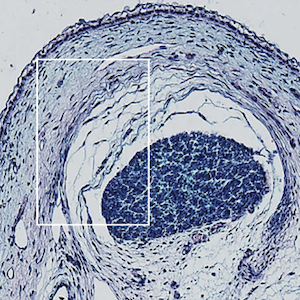Cryptogenic stroke and seronegative antiphospholipid syndrome: a case series of patients with positivity for “non-criteria” antiphospholipid antibodies

All claims expressed in this article are solely those of the authors and do not necessarily represent those of their affiliated organizations, or those of the publisher, the editors and the reviewers. Any product that may be evaluated in this article or claim that may be made by its manufacturer is not guaranteed or endorsed by the publisher.
Authors
Cerebrovascular events (CE) are one of the most common and severe events in antiphospholipid syndrome (APS), a condition characterized by thrombosis and circulating anti-phospholipid antibodies (aPL). Seronegative APS (SN-APS) refers to a group of patients with clinical features of APS but persistently negative tests for “criteria aPL”: anti-cardiolipin antibodies (aCL) and anti-β2glycoprotein I antibodies detected by enzyme-linked immunosorbent assay (ELISA), and the lupus anticoagulant detected by clotting assays. We report a series of five cases of SN-APS in young or middle-aged patients who tested positive for “non-criteria” aPL. We retrospectively collected cases of SN-APS patients who experienced CE without an identified cause despite an extensive diagnostic work-up and tested negative for criteria aPL. All the patient sera were tested for aCL by immunostaining on thin-layer chromatography (TLC) and anti-vimentin/cardiolipin (aCL/Vim) by ELISA. We identified five cases of female patients aged 21 to 58 years, evaluated at the Rheumatology Unit and/ or Stroke Unit/Emergency Department of the Sapienza University Hospital of Rome, “Policlinico Umberto I”. All patients presented a clinical history suggestive of APS. All the patients tested positive for aCL by TLC-immunostaining, and one patient was positive for aCL/Vim. In young or middle-aged patients with cryptogenic CE and a clinical history suggestive of APS, the use of new diagnostic tools for identifying aPL, if validated in future studies, could represent an important step in the prompt diagnosis of APS.

This work is licensed under a Creative Commons Attribution-NonCommercial 4.0 International License.
PAGEPress has chosen to apply the Creative Commons Attribution NonCommercial 4.0 International License (CC BY-NC 4.0) to all manuscripts to be published.










